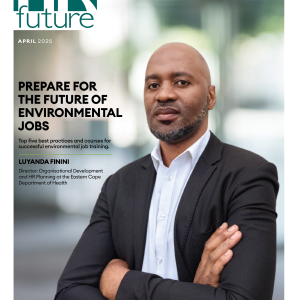The landscape of the workplace has undergone a seismic shift in recent years, with remote work transitioning from a luxury to a norm. This evolution presents unique challenges, especially in maintaining effective communication within a distributed workforce.
For staffing companies and other businesses, adapting to these changes is not just beneficial—it’s essential for thriving in 2024’s dynamic work environment.
The Evolution of Remote Work
Remote work, once a fringe concept, is now at the forefront of modern business practices. A decade ago, it was rare; today, it’s an integral part of many organizations. Recent statistics indicate that a significant percentage of the global workforce now operates remotely, a trend accelerated by the pandemic and sustained by the flexibility it offers.
This shift demands a reevaluation of communication strategies to keep remote staff engaged and productive.
As remote work continues to evolve, we’re witnessing a cultural and operational transformation in the way businesses operate. Traditional office-centric models are giving way to more flexible, digital-first environments. This shift is not just a response to external factors like global events; it’s a reflection of changing workforce preferences. Modern employees increasingly seek work-life balance, autonomy, and the freedom to work from locations that suit them best.
The evolution of remote work is also reshaping the recruitment landscape. Businesses, including MSP staffing companies, are no longer limited by geographical boundaries when sourcing talent. This broader talent pool enables companies to find the best fit for their needs, irrespective of the candidate’s location.
Furthermore, this shift opens up opportunities for employees to work for international companies without relocating, enhancing diversity and bringing varied perspectives into teams.
In this dynamic scenario, organizations that adapt quickly to the changing norms of remote work set themselves apart. They’re able to leverage the benefits of a global workforce, including increased diversity, wider skill sets, and around-the-clock productivity. This evolution, while challenging, presents an exciting frontier for businesses ready to embrace the future of work.
Challenges in Remote Staff Communication
The shift to remote work brings its own set of communication challenges. Time zone differences can lead to delays in responses and decision-making. The absence of face-to-face interaction can also lead to misunderstandings and a sense of isolation among team members.
These barriers, if not effectively managed, can significantly impact staff engagement and productivity, making it crucial for organizations, including MSP staffing companies, to find innovative solutions.
In addition to time zone differences and the absence of face-to-face interaction, there are several other challenges that remote staff communication presents, particularly for an MSP staffing company. One significant issue is the potential for digital miscommunication. Without the non-verbal cues present in in-person conversations, messages can be easily misinterpreted, leading to confusion and conflict.
Furthermore, remote work can sometimes lead to information silos where teams or individuals become isolated, hindering collaboration and knowledge sharing. This is particularly challenging for MSP staffing companies that rely on cohesive teamwork and seamless information flow across various projects and departments.
Another challenge is maintaining employee engagement and motivation in a remote setting. Without the physical presence of a team or office environment, employees might feel disconnected from the company’s culture and goals.
This can lead to a decrease in job satisfaction and productivity, which is detrimental to any organization, especially those in the staffing industry where employee performance is closely linked to client satisfaction.
To address these challenges, MSP staffing companies need to implement robust communication strategies that go beyond just using the right tools. It involves cultivating an organizational culture that supports open, transparent, and empathetic communication, ensuring that all team members, regardless of their location, feel valued and integrated into the company’s fabric.
Innovative Communication Tools and Platforms
The rise of remote work has spurred the development of various communication tools. Platforms like Slack and Zoom have become ubiquitous in facilitating real-time, efficient communication.
These tools offer unique features – Slack for instant messaging and team collaboration, Zoom for video conferencing, and Microsoft Teams for integrating multiple communication and collaboration functionalities. The key is to leverage these tools to foster a seamless communication flow.
Best Practices for Effective Remote Communication
Effective communication in a remote setting hinges on establishing clear protocols. Regularly scheduled check-ins can maintain a rhythm and ensure that everyone is aligned with their goals. It’s also vital to designate specific channels for different types of communication – for instance, using Slack for quick updates and email for formal communications.
This clarity helps in streamlining processes and reducing confusion among remote teams.
Continuing with the best practices, it’s crucial to establish a culture of open feedback. Encourage remote staff to share their insights and suggestions on improving communication. This inclusive approach not only enhances communication strategies but also makes employees feel valued and heard.
Additionally, investing in training sessions on effective remote communication can pay dividends. These sessions should cover aspects like digital etiquette, clarity in virtual presentations, and efficient email communication.
Another vital practice involves setting clear expectations. Clearly defined goals and transparent performance metrics help remote workers understand what is expected of them, aligning their efforts with the company’s objectives. This clarity is especially important for MSP staffing companies, where remote teams might work on various projects with different clients.
Recognizing and celebrating achievements, even in a remote setup, boosts morale and motivation. Simple acts of acknowledgment, like shoutouts in virtual meetings or congratulatory messages on team channels, can have a significant positive impact on team spirit.
These practices not only enhance communication but also build a stronger, more connected remote workforce.
Building a Remote Community
Creating a sense of community is vital in a remote work environment. Virtual team building activities and informal virtual meetups can significantly enhance team spirit. These activities help bridge the gap caused by physical distance, fostering a sense of belonging and camaraderie among remote workers.
A strong community feeling can lead to increased motivation and a more cohesive team.
Managing Remote Work Challenges
One of the trickiest aspects of remote work is managing time zone differences. Successful remote teams often establish overlapping hours for real-time collaboration and allow for asynchronous work during other times.
It’s equally important to emphasize work-life balance, setting clear boundaries to prevent burnout. These practices are essential for maintaining a healthy, productive remote workforce.
Case Studies
Consider the example of a tech giant that transitioned to a fully remote model. By implementing structured communication channels and regular virtual team-building exercises, they saw a notable increase in productivity and employee satisfaction.
These success stories offer valuable insights into the practical application of effective remote work strategies.
Conclusion
As we navigate the evolving landscape of remote work, it’s clear that effective communication is the linchpin of a successful remote workforce.
Companies, especially MSP staffing firms, must continue to innovate and adapt their communication strategies to stay ahead in 2024’s dynamic work environment.
By doing so, they not only enhance productivity but also foster a more connected and engaged remote workforce.
Guest writer.


























